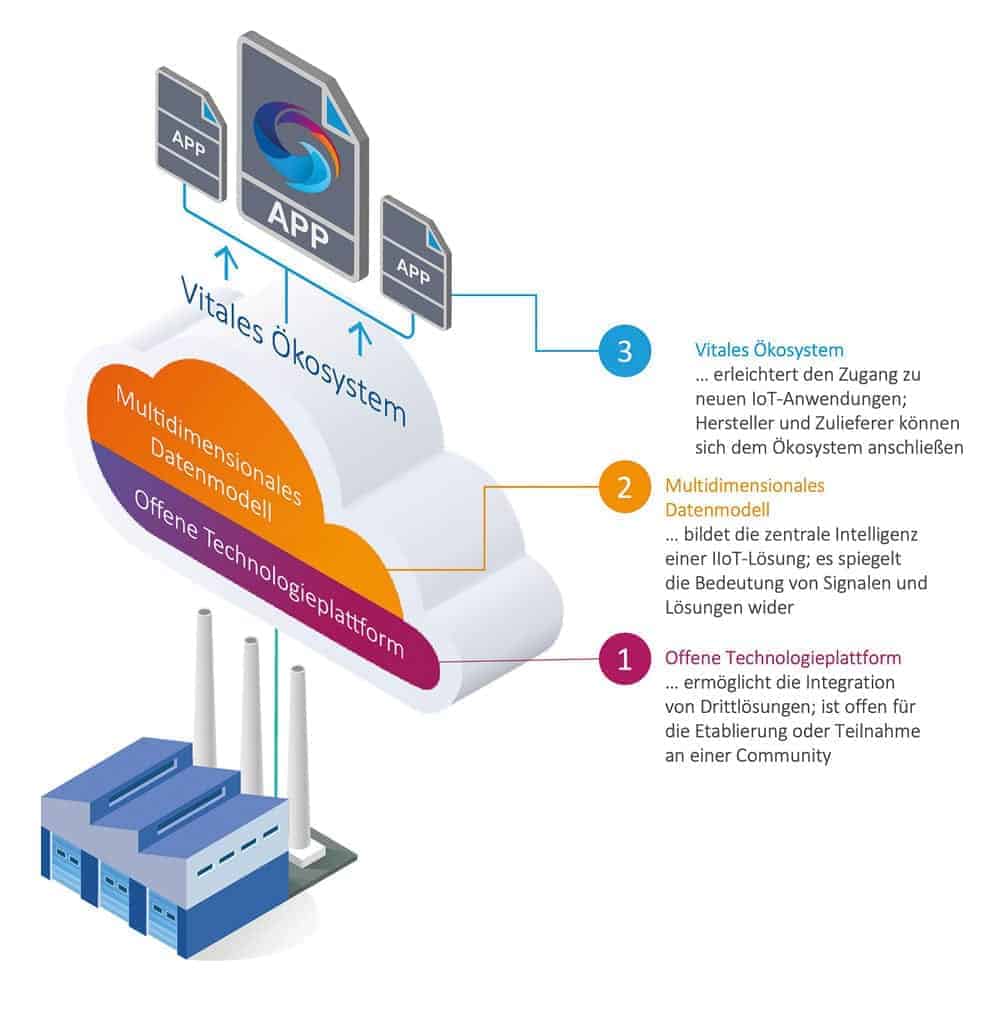Intelligent manufacture


Every company goes through its own digital transformation. But there is a similar sequence of steps that responsible managers can use to plan for digitization in the industry.
Typically, a company starts with little data on new technologies like in-memory databases, then adds new tools for better analytics and operations.
Ultimately, the use of more and more data in increasingly intelligent applications such as predictive maintenance or artificial intelligence is leading to ever greater benefits.
If we follow the analysis of the German Academy of Science and Engineering (acatech), the development phases of Industry 4.0 look like this: connectivity is followed by data visibility and transparency. Then comes the ability to predict, until finally the systems become capable of learning and adapting.
Technologically, we have arrived in the age of learning systems. However, self-learning solutions from areas such as predictive or AI are not yet widely used.
One reason: companies always have to do a balancing act between existing and required systems and required IT. After all, production, sales and service must always be able to continue.
From the outside, therefore, the impression may often arise that innovations in industry are introduced only hesitantly. Crisis situations accelerate the willingness to decide in favor of new technologies.
The challenge here is to rely on adaptive and learning systems that make it possible to reconcile what is available and what is desired along the entire digital transformation.
Companies need a solution that enables desired innovations and protects investments made. What is needed is an adaptable platform technology that enables transformation into the global world of digital supply and service chains.
The two central requirements for a 4.0 platform technology are adaptability and scalability. These requirements can only be met digitally via hybrid solutions consisting of edge and cloud infrastructures.
This applies in particular to manufacturing networks, which must be able to work internationally and multi-client capable in real time. Hybrid edge and cloud options therefore belong to the future in industry as well.

Software construction like urban planning
Industry 4.0 is a complex topic, which is why there are so-called reference architectures. The main goal is to make the planning of processes and finances as precise as possible and to align it as closely as possible with reality. The reality on the store floor must be objectively and cleanly recorded and made accessible to everyone.
Like urban planning with sewers, streets and buildings, modern factory IT architecture is about different layers that build on each other, complement each other, depend on each other.
The architecture of the Forcam IIoT platform solution follows the described principle of "enabling innovation, protecting investments". Conceptually, the solution consists of three levels.
- Open technology platform: Transparency requires connectivity: The first layer of our factory IT architecture is an open technology platform that enables comprehensive horizontal and vertical connectivity. Here, reality is objectively captured digitally, i.e. the signals from machines, material, processes, sensors, personnel, production orders.
This real data is collected and standardized in real time at the edge, i.e. locally at the machines in the plants. They form the basis for the required transparency of all processes for all participants - on the store floor as well as on the pot floor.
Horizontal connectivity is followed by the important vertical networking into the pot floor: the production data model generated at the next architectural level is integrated with controlling, namely with the financial data model of the ERP systems such as SAP with the unit cost and overhead cost planning. - Digital twin through uniform production data model: The central semantic intelligence - the rule engine - works on the second level. It generates a multidimensional production data model: Here, data becomes information, Big Data becomes Smart Data.
From untold data such as energy values, process and machine data, labor time and traceability data, and so on, the production data model provides the digital twin of each product throughout its lifecycle.
This digital twin in combination with new architectures, with new cloud systems and new applications can result in new business models. Analytically, the universal production data model forms the "Singe Source of Truth" .
Production thus becomes part of an IT network and no longer forms a monolithic system. The center of this network is the dormant unified data lake. With the unified data lake, a company can open itself up to the innovative applications it needs for digital evolution. - Being smart means being open to ecosystems: Every manufacturing company has its own needs and requirements. Every company wants to be able to act quickly and flexibly.
Openness is therefore a basic requirement in the manufacturing world of the future. That is why the information in the third level of our solution is open to other applications through open web interfaces (Open API), in our solution the Force Bridge API.

Composition and collaboration
Like bridges, the information from the data lake is available via Open API to almost any desired real-time application - performance analyses, detailed planning (schedule and dispatch), traceability (track and trace), to name just a few.
Forcam's universal production data model can be opened up to information from third-party apps as well as cloud infrastructure providers - for example, Microsoft Azure's cognitive services for AI, the many market-renowned apps on the Microsoft Power Platform, or Microsoft BI services, business intelligence, for collaboration and composition.
Companies have the ability to use their production data lake to apply their own business semantics to many other desired business applications.
Adaptable IT platform technology makes manufacturing intelligent, and everyone benefits, right down to the workers. In this way, customer-specific user interfaces can be developed for the workforce, individual factory apps can be configured with start-up applications, or completely new proprietary and industry-specific solutions can be found.





